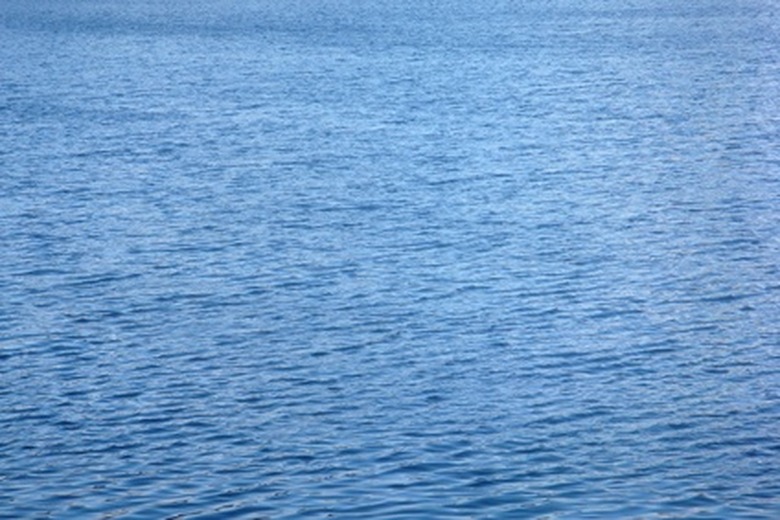Types Of Water Currents
In oceans and other water bodies, the motion of the water is defined by currents. There are two types of currents, surface currents and deep water currents, that dictate how and where water will move. Scientists study currents to learn more about how the ocean works mechanically, as well as using the speed and location of currents as a way to measure changes in large bodies of water.
Surface Currents
Surface Currents
Surface currents occur in the upper 400 meters of the ocean. Because the ocean is so much deeper in most places, these currents only account for 10 percent of the total amount of currents in the ocean.
These currents move because of solar heating and wind. Solar heating causes water to expand. In the middle latitudes by the equator, water sits about eight centimeters higher than the rest of the water, which causes a slope that water can flow down, creating currents.
Wind physically pushes the water, with faster currents occurring in shallower water. As the water gets deeper, wind-driven currents move more slowly. This phenomenon causes spiraled currents, with the tops moving faster than the bottom.
Deep Water Currents
Deep Water Currents
Deep water currents make up 90 percent of the ocean currents. Unlike surface currents, which are driven by interactions with sun and wind, deep currents are caused by the interaction between temperature and water density.
The higher the salt content of water, the more dense it is. Dense water is heavier than less dense water, and thus will sink because of gravity.
The warmer water is, the more likely it is to rise towards the surface.
So, when water is both cold and very dense, it will sink to the bottom of the ocean. This motion, with heavier, colder water constantly replacing warm, less salty water, causes the deep water currents. These currents cover a lot of territory. Most start at latitudes close to the poles where it is cold and resurface as they get closer to the equator where temperatures are warmer. This long chain of currents is known as the ocean's Conveyor Belt.
Why Currents Are Important
Why Currents Are Important
According to the National Oceanic and Atmospheric Administration, understanding the cause and movement of ocean currents is important to utilizing the sea for human purposes. Currents are important to docking and undocking boats, speeding up shipping lanes and keeping ships safe, especially in narrow waterways. Understanding where currents are going and how quickly they are moving also aid search and rescue missions and environmental disaster clean-up.
Cite This Article
MLA
Michelle, Meg. "Types Of Water Currents" sciencing.com, https://www.sciencing.com/types-water-currents-6928360/. 24 April 2017.
APA
Michelle, Meg. (2017, April 24). Types Of Water Currents. sciencing.com. Retrieved from https://www.sciencing.com/types-water-currents-6928360/
Chicago
Michelle, Meg. Types Of Water Currents last modified August 30, 2022. https://www.sciencing.com/types-water-currents-6928360/
